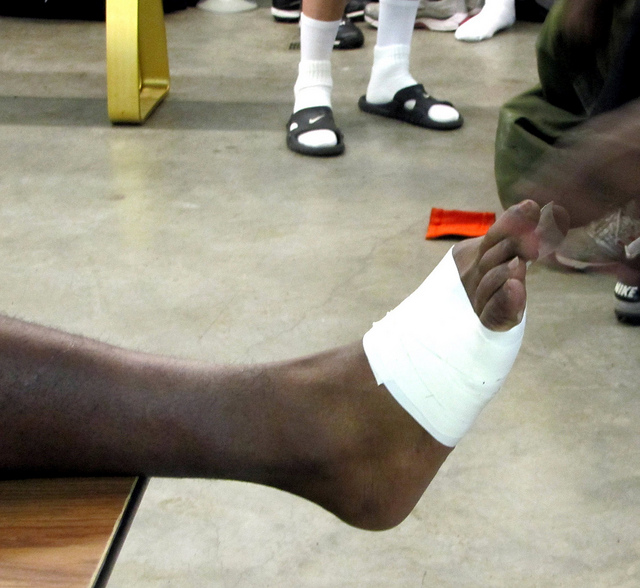Did you know that the name “turf toe” originates from athletes playing on artificial turf? And did you know that 16 of the 31 National Football League stadiums use artificial turf as opposed to natural grass? What’s the relation? Well, turf toe is important to understand, especially for athletes, because it’s most prevalent in sports like American football.
Turf toe is a sprain of the ligaments surrounding your big toe joint, called the metatarsophalangeal (MTP) joint. The MTP joint, also known as the “ball of the foot,” helps with vertical movement. When walking or running, you push off with your big toe, land on your other foot, and thereby shift your weight to that foot. While moving, a turf toe injury occurs when you fail to shift weight to your other foot, and your toe sticks to the ground, for example, from getting tackled in football. This awkward bending of the big toe beyond its limit is called hyperextension and is what causes a sprain to the MTP joint.
Image Source: Icon Sportswire / Contributor
Athletes playing on artificial turf are more susceptible to turf toe because the turf is harder than grass, and their shoes are more likely to get stuck. A common misconception is that non-football players playing on grass can’t get this injury. However, turf toe can affects all athletes playing any sport, whether it be soccer, wrestling, gymnastics, and dance. Also, turf toe can happen on natural grass if an athlete’s shoes don’t provide proper support or are too flexible.
Symptoms of turf toe include pain and swelling at the base of the big toe. Sometimes a “popping” sound can be heard when the injury occurs. Depending on the severity of the sprain, Grade 1, 2, or 3, your movement will be limited, and you’ll have difficulty with balance. Basic treatment involves RICE, which is a mnemonic for rest, ice, compression, and elevation. In addition, to relieve stress on the MTP joint, wearing a walking boot or using crutches is recommended. In more severe cases, such as a grade 3 sprain, surgery and physical therapy are required for a full recovery.
Ways to prevent turf toe are to wear properly-fitted shoes with good support and rigidity to prevent unnatural bending of the big toe. In addition, increasing the flexibility and strength of the foot and toes are important. For example, this can be accomplished with yoga, conditioning, or exercise.
The risk of injuries, such as turf toe, is a part of playing sports. But that shouldn’t deter you from sports if that’s your passion. Just keep in mind, if you do get turf toe, rest is key to recovery.
Feature Image Source: Turf Toe by George Wesley & Bonita










